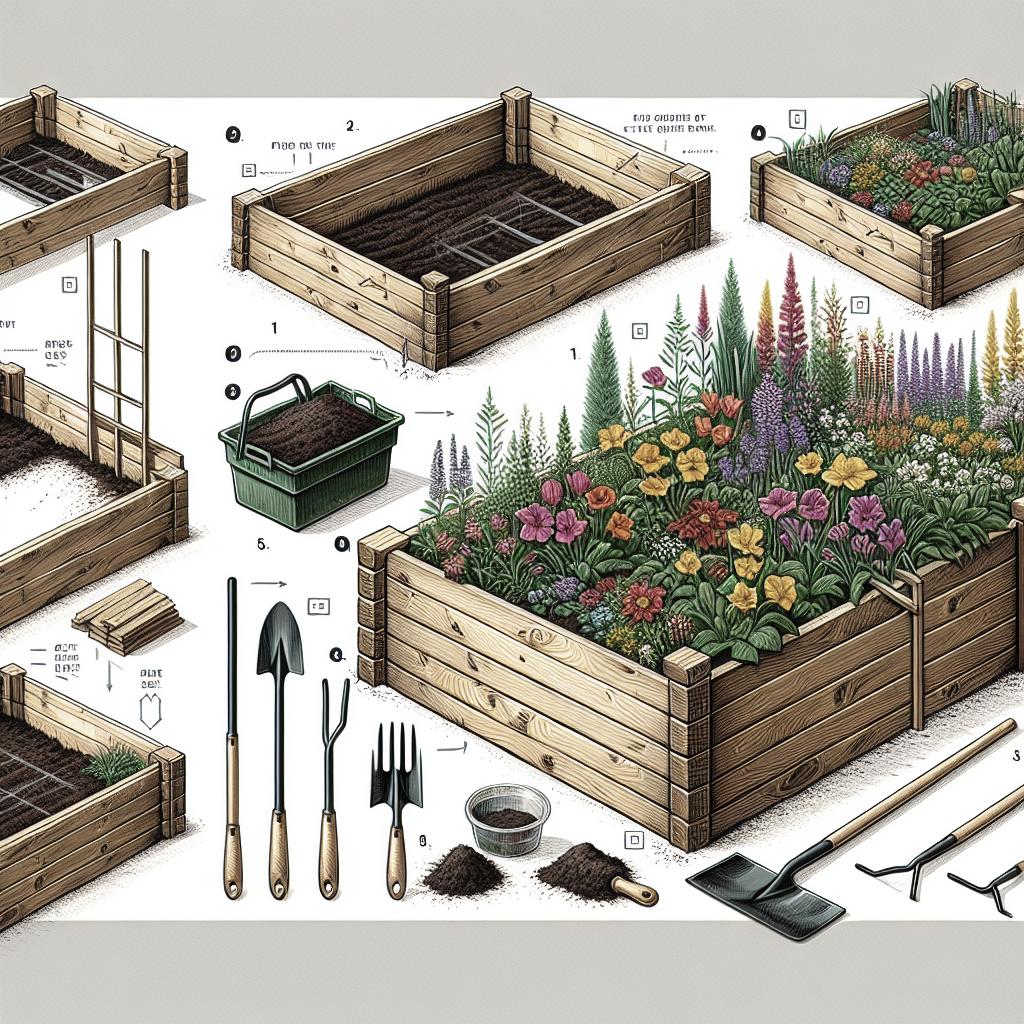“`html
How to Make a DIY Mosaic Table Top with Broken Dishes
Transforming a simple table into a stunning, eclectic piece of art can be as easy as breaking a few dishes—literally. In this blog post, we explore the art of creating a DIY mosaic tabletop using broken china or ceramics. It’s a creative and sustainable way to breathe new life into unused or chipped dishes while adding a splash of color and personality to your furniture. Learn everything you need to know, from gathering supplies to strategically breaking dishes, organizing your design, adhering pieces, and applying grout for a polished finish. This guide equips you with skills and tips to craft your personalized mosaic masterpiece.
SUPPLIES
Before diving into the mosaic creation process, gathering all necessary supplies is crucial. You will need the table itself, broken dishes or tiles, tile adhesive, grout, a putty knife, safety goggles, and work gloves. If starting with whole dishes, a hammer or tile nipper will be essential for breaking them into smaller, usable pieces.
In addition to the core items, consider keeping a set of protective sheets or newspapers to cover your work area. This not only prevents damage but also makes cleanup easier. A sponge and water bucket will also be helpful for cleaning away excess grout from the mosaic surface.
Choosing the color scheme and type of dishes or tiles will set the tone for your mosaic. Opt for a blend of complementary colors and textures to make your piece visually appealing. Thrift stores and flea markets are excellent places to find affordable dishes perfect for a project like this.
Step 1 – Prep the Table
Before you can start laying tiles, preparation of the table is key. Begin by cleaning the surface thoroughly to remove any dirt, grease, or old finishes. If the tabletop is made of a material that doesn’t easily bond with adhesive, lightly sand the surface to improve grip. This ensures the adhesive properly bonds and prevents future damage.
If your table has any holes or deep grooves, fill them with wood filler and sand until smooth. This creates a flat surface which is essential for laying tiles evenly. Once the table is prepped, cover the edges and any areas you don’t want to mosaic with painter’s tape to protect them from adhesive and grout splashes.
Step 2 – Break the Dishes
Breaking dishes may seem straightforward, but doing so safely requires care. Wear safety goggles and gloves to protect yourself from sharp fragments. To break your dishes, gently wrap them in an old towel and use a hammer or tile nipper to create different shapes and sizes.
Try to achieve a mix of larger pieces for focal points and smaller shards for filling gaps. It’s important to keep in mind your desired pattern and color distribution as you break the pieces. You may also want to use a tile nipper for more controlled cuts, allowing you to shape specific elements more creatively.
Step 3 – Create a Pattern
With your broken pieces ready, it’s time to design the mosaic layout. Organizing your tiles on the tabletop is not just about aesthetics; strategic planning can save time during application. Arrange the pieces on the table in your desired pattern without using adhesive first, making any necessary adjustments in real time.
Consider balance in colors and shapes. Whether it’s abstract or structured, aim for symmetry or an intended flow. Take photos of your layout for reference when you begin to adhere the pieces. This forward-planning ensures that every tile has its place, and the final result is a coherent masterpiece.
Step 4 – Create the Mosaic on the Table Top
With your design finalized, it’s time to anchor your pieces permanently. Start at a corner, lifting one section at a time. Apply the tile adhesive to the tabletop using a putty knife, then press each tile piece onto the table. Ensure each piece is secured firmly before moving to the next section.
Work incrementally, employing similar sections to adhere efficiently and avoid confusion. Leave consistent spacing between the tile pieces for grouting. As you progress, periodically step back to assess your pattern and alignment, ensuring everything fits as planned.
Step 5 – Grout and Seal
Once the tiles are securely glued and the adhesive is dry (follow product instructions for drying times), it’s time to apply grout over the mosaic. Mix your grout according to the manufacturer’s instructions and apply it over the entire surface, ensuring it fills all the gaps between the pieces.
Using a rubber float, spread the grout evenly while wiping away excess with a damp sponge. Be careful not to remove grout from between the tiles. After the grout is dry, typically within 24 hours, seal it for added durability and moisture resistance, especially if your table will be used outdoors or in humid areas.
After
Your mosaic project doesn’t end with the last tile. Make sure to maintain your tabletop by regularly cleaning it with non-abrasive detergents. This ensures the longevity and vibrancy of your new masterpiece, allowing it to bring joy and color to your space for years to come.
Capture your beautiful creation by taking photos, which can also serve as inspiration and motivation for future projects. Consider sharing your work on social media or mosaic craft forums, connecting with a community of like-minded creators for tips and feedback.
Related
If this project has sparked your interest in mosaic art, consider exploring other creative possibilities! Mosaics can enhance picture frames, plant pots, and even flooring. There are endless applications and techniques to explore, making each project an opportunity to innovate and personalize.
For additional resources, seek out books or online classes dedicated to mosaic art. Engaging with experts and enthusiasts can further enhance your skills, opening doors to more complex and intricate designs, boosting creativity with each new endeavor.
Final Thoughts
| Step | Description |
|---|---|
| Supplies | Gather the necessary materials: table, broken tiles or dishes, adhesive, grout, and other tools. |
| Step 1 | Prepare the table surface for mosaic application by cleaning and, if necessary, sanding or filling. |
| Step 2 | Safely break dishes into suitable mosaic pieces, considering size for your design layout. |
| Step 3 | Create a pattern with your pieces on the tabletop without using adhesive, tweaking as needed. |
| Step 4 | Stick tiles to the table using adhesive, working carefully to follow the prearranged pattern. |
| Step 5 | Grout the mosaic tiles and apply a sealer to protect the finished tabletop. |
| After | Maintain and showcase your new mosaic creation, learning further mosaic applications and techniques. |
| Related | Explore other mosaic projects and join a community to further your mosaic-making skills. |
“`


